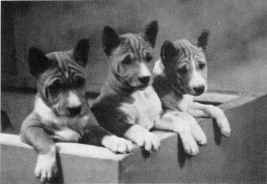I find it rather amusing that photos and comments over Liberian dogs should be called witch-hunting,
whilst far less complimentary remarks on things like big ears are just considered fair game. To me, in a free world,
provided statements are not rude or untruthful, all comments should be fair game.
Over big ears, Mrs. Ford writes in THE BASENJI, October' 1979, page 2, "looking at the photo of the Kwillo
x Kikuyu litter one wonders where the idea of small neat ears arose. " As I explained in a previous issue, Mr.
Valtier, who was only in Basenjis a very short time, got so many of his facts muddled in his article in THE
BASENJI, August, 1979, I felt he had confused the Kwillo litter with another one, born in New York about the
same time, as they were such a different type. I promised to look for this New York photo on my return from
Australia. I could not find it, but found a less-good but rather similar one. I think anyone with half an eye for
type, will find the two photos very different.
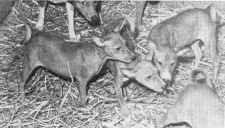
I think the other photos will show not how the idea of small neat ears arose, but how we HAD small neat
ears. The photo of 5 dogs shows from left to right: K'Impi, Kwango, Kookoo, KasuiandKavirondo, all of the
Congo. Kwango and Kasui were the sire and dam of Kiteve and Kikuyu of the Congo, Kobbi (litter brother to
Kikuyu) and K'Impi were the sire and dam of Kwillo of the Congo and Kobbi and K'Impi's daughter Senji, were
the sire and dam of Koodoo of the Congo. The parents of several of these dogs were Bongo and Bokoto. These
dogs were the very foundation of the breed and their points were the basis of the standard. Particularly note the
ears of Ting Deet. To me they represent the almost perfect ears of three native dogs.
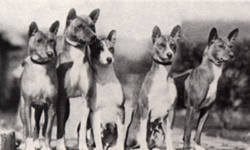
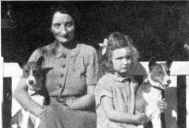
Mrs. Burn and Jennifer
Burn with BONGO and
BOKOTO OF BLEAN
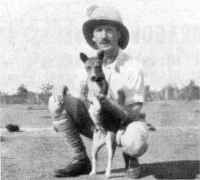
Maj.
Richards with TING DEET
To take ears a little further, I am enclosing a snap of three pups born about 1946, which show how the ears
are still small, and it was sometime after this that the ears deteriorated into the bigger and less typical, and to my
mind, less attractive feature that they are today.
